Ancient Beliefs About The Soul
Ellen Lloyd - AncientPages.com - Do all living beings have a soul? What happens to the soul after death? For as long as anyone remembers these questions have occupied the minds of some of the world’s greatest philosophers and scientists. The concept of the soul is very old. Ancient beliefs about the soul can be found among many cultures worldwide.
A 3,000-year-old stone memorial in the Iron Age city Sam’al, Turkey reveals our ancestors were very curious about the soul.
 Representation in the round of the soul-Ba, arms raised to receive water and food from the gods (Hildesheim museum, Germany). Image credit: Einsamer Schütze - CC BY-SA 3.0
Representation in the round of the soul-Ba, arms raised to receive water and food from the gods (Hildesheim museum, Germany). Image credit: Einsamer Schütze - CC BY-SA 3.0
The 800-pound, three-foot-tall piece of rock, has an incised picture of a man, the deceased, who was presumably cremated. The inscription on the monument was made by a man named Kuttamuwa and words explain that the soul of the now dead man resided within the stone slab. So, people believed the soul lived in the stone.
Belief of the soul is linked with human consciousness
The recognition of a soul appeared hand-in-hand with human consciousness. It is likely it was first voiced when we had a language to put the idea of a soul into words. That would place the time frame for a soul around 200,000 years ago when humans experienced a cultural explosion which they expressed in art, clothing, and evidence of religion.
Charon (Greek) guides dead souls to the Underworld. 4th century BC. Image credit: Bibi Saint-Pol - Public Domain
Ancient Greeks’ view about the soul
The idea that we have a soul can be encountered in many of the world’s religions, especially in the ancient world. Greek philosophers like Plato saw the world as a spiritual being, and the idea of the world soul received the name anima mundi.
Anima mundi was a spiritual essence that enveloped everything in the world and all of nature.
From Homeric poems, we learn that the soul is something that a human being risks in battle and loses in death. On the other hand, it is what at the time of death departs from the person's limbs and travels to the underworld, where it has a more or less pitiful afterlife as a shade or image of the deceased person.
Later, people were no longer convinced that the world was so spiritually developed. With creation came sin and a separation between the worldly and the divine, and the world lost its soul.
Renaissance artists revived the concept of the soul
During the Renaissance, the concept of a soul was brought to life again. Renaissance artworks attempted to convey the message there is a a spiritual connection between the world and all living things.
While Christianity firmly believed in a divide between the worldly and the spiritual, artists saw concepts like the sacred proportions as proof that everything was connected.
Ancient Egyptian concept of the soul
The ancient Egyptians believed that a human soul was made up of five parts: the Ren, the Ba, the Ka, the Sheut, and the Ib. In addition to these components of the soul, there was the human body. An important part of the Egyptian soul was thought to be the Ib or heart. The heart was the key to the afterlife. A person's shadow Sheut was always present. The shadow was also representative to Egyptians of a figure of death, or servant of Anubis, a god associated with mummification and the afterlife in ancient Egyptian religion. The shadow was depicted graphically as a small human figure painted completely black.
 The Egyptian ba, or the personality part of the soul, hovers over its mummy. Scanned from The Egyptian Book of the Dead: The Book of Going Forth by Day by James Wasserman et al. Public Domain
The Egyptian ba, or the personality part of the soul, hovers over its mummy. Scanned from The Egyptian Book of the Dead: The Book of Going Forth by Day by James Wasserman et al. Public Domain
As a part of the soul, a person's name - ren was given to them at birth. The ancient Egyptians believed that it would live for as long as that name was spoken, which explains why efforts were made to protect it and the practice of placing it in numerous writings.
The 'Ba' was everything that makes an individual unique, similar to the notion of 'personality. The Ka was the Egyptian concept of vital essence, that which distinguishes the difference between a living and a dead person, with death occurring when the ka left the body.
Ancient Egyptians believed that death occurs when a person's ka leaves the body. Ceremonies conducted by priests after death, including the "opening of the mouth", aimed not only to restore a person's physical abilities in death but also to release a Ba's attachment to the body. This allowed the Ba to be united with the Ka in the afterlife, creating an entity known as an "Akh" meaning "effective one").
Head-hunting tribes believed head contained a soul-substance
According to a Dutch missionary working and living in Indonesia from the 1890s, head-hunting tribes valued heads of their enemies not because they were trophies, but because they contained a soul-substance. This soul-substance could be transferred from one person to another. It could be stored and make the entire community stronger.
Taking heads increased the soul-substance of a family, a community, or a village. The village became more fertile, crops would be healthier and productive, and animals would be bigger and stronger, all ultimately leading to a better life. Without extra soul-substance in the villages, crops would wither and die, villagers would fall ill, and the community itself would fall into decline.
The concept of the soul remains an unsolved puzzle in modern times. Much has been written and said about the existence of the soul and it still one of the greatest mysteries of all times.
Written by Ellen Lloyd – AncientPages.com
Copyright © AncientPages.com All rights reserved. This material may not be published, broadcast, rewritten or redistributed in whole or part without the express written permission of AncientPages.com
More From Ancient Pages
-
 On This Day In History: Battle of Englefield Was Fought – On Dec 31, 870
News | Dec 31, 2016
On This Day In History: Battle of Englefield Was Fought – On Dec 31, 870
News | Dec 31, 2016 -
 Algonquin People And The Myth Of The Medicine Woman In The Moon
Featured Stories | Feb 1, 2016
Algonquin People And The Myth Of The Medicine Woman In The Moon
Featured Stories | Feb 1, 2016 -
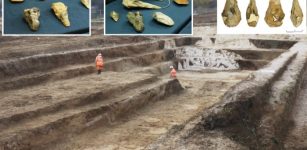 Rare Discovery: Giant Stone Artifacts Found On Ice Age Site In Kent
Archaeology | Jul 6, 2023
Rare Discovery: Giant Stone Artifacts Found On Ice Age Site In Kent
Archaeology | Jul 6, 2023 -
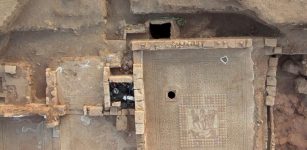 1,700-Year-Old Roman Villa, Beautiful Mosaics, Coins Unearthed In Ancient Roman Port Of Ptolemais
Archaeology | Jun 12, 2017
1,700-Year-Old Roman Villa, Beautiful Mosaics, Coins Unearthed In Ancient Roman Port Of Ptolemais
Archaeology | Jun 12, 2017 -
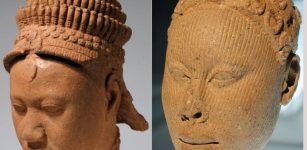 Ife Head: Significance Of The Head ‘Ori’ In Yoruba Ancient And Present Beliefs
Artifacts | Mar 27, 2019
Ife Head: Significance Of The Head ‘Ori’ In Yoruba Ancient And Present Beliefs
Artifacts | Mar 27, 2019 -
 Last Of The Giant Camels And Archaic Humans Lived Together In Mongolia Until 27,000 Years Ago
Fossils | Mar 24, 2022
Last Of The Giant Camels And Archaic Humans Lived Together In Mongolia Until 27,000 Years Ago
Fossils | Mar 24, 2022 -
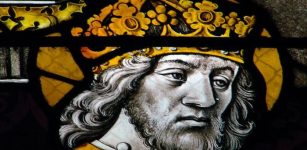 Charlemagne – Most Famous Emperor Of Education And Enemy Of Pagan Worshippers – What Did He Really Mean For Europe?
Featured Stories | Mar 22, 2023
Charlemagne – Most Famous Emperor Of Education And Enemy Of Pagan Worshippers – What Did He Really Mean For Europe?
Featured Stories | Mar 22, 2023 -
 Female Demon-Like Spirits That Can Lure Men Into A Deadly Circle Dance
Featured Stories | Apr 17, 2025
Female Demon-Like Spirits That Can Lure Men Into A Deadly Circle Dance
Featured Stories | Apr 17, 2025 -
 Green Comet Last Seen By The Neanderthals 50,000 Years Ago May Be Visible To The Naked Eye This Week
Archaeoastronomy | Jan 9, 2023
Green Comet Last Seen By The Neanderthals 50,000 Years Ago May Be Visible To The Naked Eye This Week
Archaeoastronomy | Jan 9, 2023 -
 Tokoloshe: Demonic Creature That Feeds On Spiritual Energy Of Its Victims
Featured Stories | Sep 9, 2020
Tokoloshe: Demonic Creature That Feeds On Spiritual Energy Of Its Victims
Featured Stories | Sep 9, 2020 -
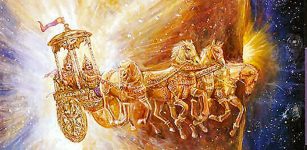 Sun: Highest Cosmic Power Worshiped By Ancient People And Represented By Deities
Featured Stories | Apr 1, 2019
Sun: Highest Cosmic Power Worshiped By Ancient People And Represented By Deities
Featured Stories | Apr 1, 2019 -
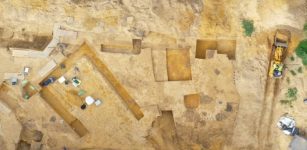 Unusual Mini Temples Discovered In Ancient Roman Camp In Haltern, Germany
Archaeology | Nov 16, 2023
Unusual Mini Temples Discovered In Ancient Roman Camp In Haltern, Germany
Archaeology | Nov 16, 2023 -
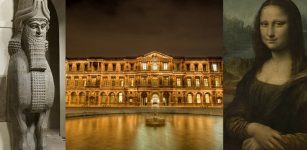 Louvre Museum’s Entire Collection Is Now Available Online To Anyone
News | Mar 31, 2021
Louvre Museum’s Entire Collection Is Now Available Online To Anyone
News | Mar 31, 2021 -
 Vodyanoi: Evil Water Spirit In Ancient Beliefs Of The Slavs
Featured Stories | May 23, 2019
Vodyanoi: Evil Water Spirit In Ancient Beliefs Of The Slavs
Featured Stories | May 23, 2019 -
 On This Day In History: Aviator Amelia Earhart Was The First Woman To Cross The Atlantic By Air – On June 18, 1928
News | Jun 18, 2016
On This Day In History: Aviator Amelia Earhart Was The First Woman To Cross The Atlantic By Air – On June 18, 1928
News | Jun 18, 2016 -
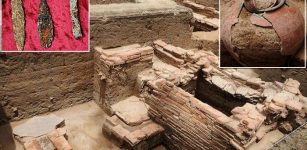 Keezhadi Excavations Reveal: Tamil-Brahmi Script Older Than Previously Thought
Archaeology | Sep 25, 2019
Keezhadi Excavations Reveal: Tamil-Brahmi Script Older Than Previously Thought
Archaeology | Sep 25, 2019 -
 Mystery Of The Giant Laos Jars Continues – New Discoveries Reported By Scientists
Archaeology | Apr 19, 2021
Mystery Of The Giant Laos Jars Continues – New Discoveries Reported By Scientists
Archaeology | Apr 19, 2021 -
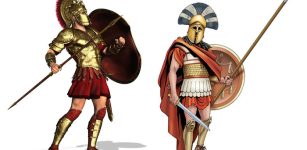 Who Were The Hoplites And What Was Their Armor Composed Of?
Ancient History Facts | Apr 20, 2018
Who Were The Hoplites And What Was Their Armor Composed Of?
Ancient History Facts | Apr 20, 2018 -
 Aglaonice (Aganice): Female Greek Astronomer From Thessaly Was Believed To Be A Witch
Featured Stories | Sep 4, 2019
Aglaonice (Aganice): Female Greek Astronomer From Thessaly Was Believed To Be A Witch
Featured Stories | Sep 4, 2019 -
 First Rare Evidence Of Biblical Purple From The Time Of King David And King Solomon
Archaeology | Jan 30, 2021
First Rare Evidence Of Biblical Purple From The Time Of King David And King Solomon
Archaeology | Jan 30, 2021

